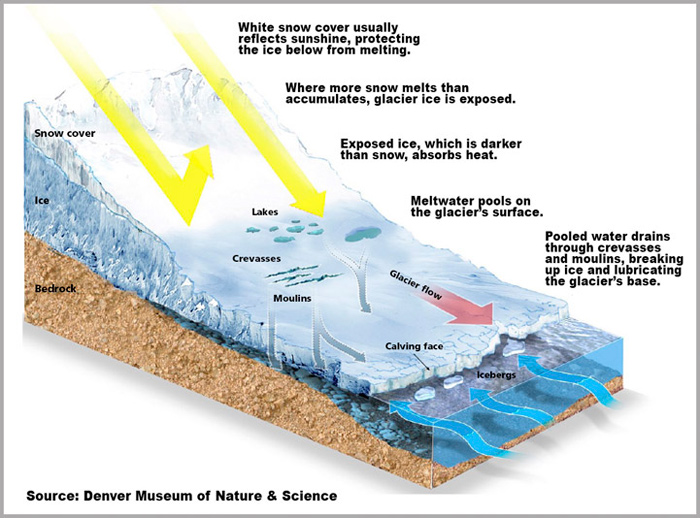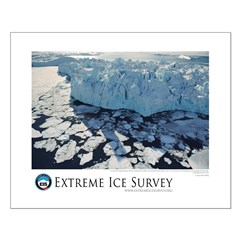A glacier is formed from compacted layers of snow. When new layers of snow fall, previous layers compress into ice.
When the ice extends into the ocean, the temperature of the water and even tides can influence how the floating ice shelf, or “tongue” (the part that extends into the ocean), responds. The breakup of the Larsen B ice shelf on the Antarctic peninsula in 2002 is an example of the abrupt changes that can occur: http://nsidc.org/news/press/larsen_B/







